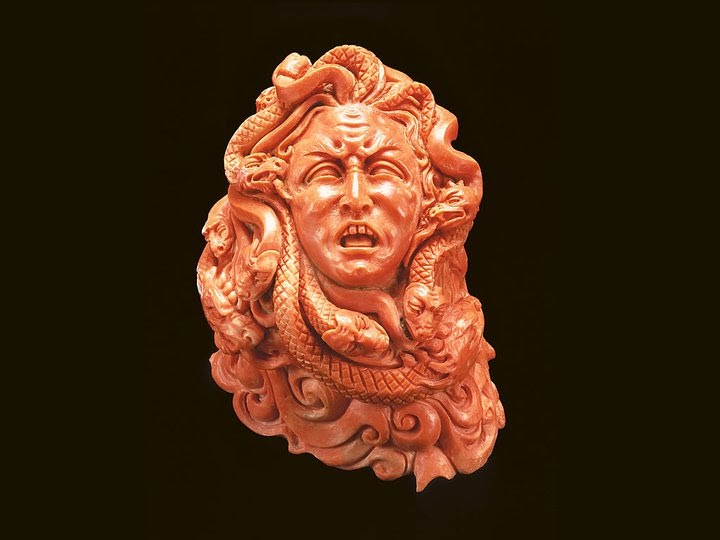Americans love it; the British admire them in the scenic windows of Harrods in London. Germans and Japanese, appreciate its Renaissance, biblical subjects or scenes from Greek mythology.
Estimates of the art of coral engraving can be found in the Archaeological Museum in Naples with the famous Farnese Cup, depicting the allegory of the fertility of the Nile, and Donatello’s marble medallions in the courtyard of the Medici Palace. Some time ago, a wreck of a boat equipped for coral fishing was found off the coast of Pantelleria, dating back to the 4th century AD.
The skilled masters of the small town of Torre, using files, burins and bows manage to produce authentic masterpieces not only from coral but also from mother-of-pearl, carnelian and ivory. From necklaces to earrings, rings, brooches and bracelets. The engraving of cameos on shell has ancient origins. Eighty percent of the world’s production comes from the town at the foot of Vesuvius, some of it transferred to Marcianise. Cameos are obtained from some particular shells such as Cassis Madascariensis better known as sardonyx, which possesses a double layer, brown inside and is perfectly white and compact on the surface.
Over the centuries coral has been considered not only a precious stone but also medicinal, amulet, and currency. In India it is used as an ingredient for an aphrodisiac mixture: the "Kusta," made from honey, menthol, various spices and pulverized coral.
In the seventeenth century Italy had considerable importance in the transformation of this precious material belonging to the animal kingdom, especially in works of mixed decoration.
Who could suspect that a twig collected at the bottom of the sea was of animal origin? It was Henry Lacaze-Duthiers, in 1864 who, after years of diatribes, placed coral in this mysterious world.
he precious little plant because of its beauty, the legends related to its powers, and the difficulty of harvesting it, has always come at a high price. The most common coral is red; more valuable is pink or white. Good quality one should be compact. Without pits or lesions. The color should be as uniform as possible.
Generally it is women who wear coral jewelry. In some African countries it is, however, mainly men who sport them. The king of Benin, in 1979, wore a suit made of 40 kilos of coral worked in Naples 300 years earlier during his coronation.
Americans love carved shells, as does any Italian art object that has some classical suggestion. The same goes for the British. With Germans and Japanese the talk becomes perhaps more qualifying; they have an innate sense of classical beauty. Red gold, an expanding market to emerging countries such as India, China, the Arab Emirates.
A jewel worked and fished at the bottom of the sea can cost over fifty thousand euros.
The history of coral fishing and processing dates back to prehistoric times. The earliest records are from around the 1400s, when fishing was practiced by "humble fishermen with the boldness of giants," who, in order to defend themselves against pirates, founded the mutual aid society "The Sailor’s Mount" in 1639. One scholar adds that Charles III of Bourbon in 1739 transformed the Society into the Coral Code.
It is a laudable initiative of the Banca di Credito Popolare of Torre del Greco to have organized the biennials on the Routes of Coral, an excursus on the working of red gold, ethnic jewelry and customs and traditions, from India to Islamic Asia, from Turkey to Uzbekistan, from Morocco to the Kingdom of Sheba.













